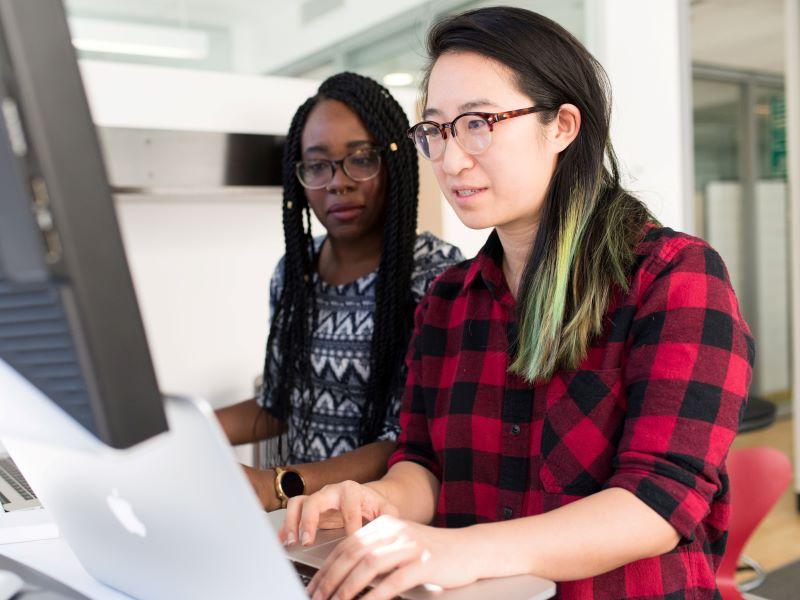
Five tips for blended learning design
Blended learning has become more prevalent in higher education in the past few years. But what do students think about it? A students-as-co-creators project found out
In the past decade, teaching and learning in higher education have been geared towards improving the student learning experience. There is also a growing interest in students as co-creators projects, in which teachers and students collaborate to improve curriculum design and teaching practices. Working with students as co-creators offers several benefits, including improving higher-order thinking skills and student engagement, as well as bringing inclusive perspectives to assessments and curriculum design.
Higher education institutions are going through a digital transformation process, shaping teaching and learning practices and thus resulting in a blended learning approach. For that reason, Jisc produced a report on Beyond Blended Learning that explores a combination of four modes of teaching and learning, including on-campus, such as lectures and seminars; off-campus, eg, field trips; online, synchronous and asynchronous; and independent learning activities, after classes.
- Delivering blended learning to work for all students, everywhere
- Tips for adopting the right technology for blended learning
- How to help students get the best out of blended learning
Here, we’ll look at the results from a students-as-co-creators project at the University of Westminster, by providing five tips to guide the design of blended learning courses.
This students-as-co-creators team involved three second-year undergraduate students and two senior lecturers from the Westminster Business School. We used a mixed-methods approach to gain a deeper understanding of students’ preferences for blended learning modules. The research involved a survey questionnaire, of which second-year students were the most likely to respond and most participants (59 per cent) identified as female. We also held 10 semi-structured interviews. The key finding was that 78 per cent of students felt blended learning activities positively impact their engagement.
Here are our tips:
Combine blended learning activities
An effective blended learning module has a good range of learning activities, with a clear preference for on-campus activities (39 per cent), such as lectures, workshops and seminars; off-campus activities (26 per cent), such as field trips, exhibitions and visits to companies; online synchronous activities (17 per cent) and independent learning activities (18 per cent), such as completing tasks after reading case studies or watching videos. The interviewees confirmed these were the less popular activities, arguing that students can focus more during on-campus classes and enjoy having social interaction with their peers. The literature points out that on-campus classes are more engaging and interactive than asynchronous online sessions.
Find a suitable space when attending online classes
A well-organised study space helps prevent physical strain, improves contraction and enhances students’ attentiveness by minimising distractions. Consequently, the learning environment has the potential to boost students’ academic performance as well as their creativity and emotional intelligence. When designing a blended learning module, it is important to consider students’ most preferred location when attending online classes. In this study, the most popular location was home (88 per cent); less commonly chosen alternatives included university library (38 per cent) and empty lecture theatres and seminar rooms (25 per cent). Students reported greater satisfaction with online classes, largely due to the enhanced flexibility and comfort, which can be optimised in a home environment.
Use digital tools
Digital tools should be used in all four teaching modes to develop interactive classes, help students understand complex concepts, and allow students to express knowledge in different forms, such as verbal, written and audio. In addition, digital tools facilitate the provision of ongoing feedback as part of formative assessment. The three most popular digital tools are quizzes and polls (26 per cent), such as Kahoot, Poll Everywhere and Mentimeter, Microsoft 365 tools for co-authoring documents (24 per cent), such as MS Word, PowerPoint and Excel, and short videos (23 per cent). While virtual or augmented reality is the least favourite technological tool (9 per cent), if students have the opportunity to use it more often, its preference rate could improve.
Create a sense of belonging
Fostering a sense of belonging in blended learning modules can be challenging, as online interactions often feel impersonal and might not be well suited to every student. On the other hand, in crowded on-campus classes, it can be difficult to connect with like-minded peers. For that reason, blended learning modules should integrate online and offline activities. For example, interviewees pointed out that attending a field trip and rotating teams in classes allowed them to build rapport with their classmates.
For online classes, a sense of belonging can be developed using digital tools, such as discussion boards and Padlets; peer feedback platforms, like Peergrade; and interactive quizzes and polls, like Kahoot. Incorporating these on- and off-campus activities throughout is crucial for nurturing a cohesive and engaged learning environment.
Use different types of assessment
Blended learning modules should use a good range of assessment types, with the most popular ones being written assessments (23 per cent), such as reports and essays, online quizzes (15 per cent), and live presentations (15 per cent). Regarding the last, students prefer live rather than recorded presentations, as there may be technical issues during the recording and they prefer interacting face-to-face with their teammates during the presentation. However, preferences are changing in favour of non-traditional assessment types, especially using digital tools, including video presentations, e-portfolios, digital projects, posters, podcasts and simulation games. Meanwhile, the least popular assessment type is exams (0.3 per cent), which challenges the view that open-book exams and time-limited assignments are popular in blended learning.
The development of blended learning modules has been increasing, especially since the pandemic, and there are good practices that educators can follow to improve the student learning experience. Educators should consider that blended learning goes beyond the combination of on-campus and online classes, exploring different spaces outside the classroom and using digital tools to decolonise learning in higher education. Developing the right balance between these four teaching modes varies according to discipline, and student-as-co-creator projects can serve as a valuable source to gather student voices and improve their learning experience.
Gustavo R. Espinoza-Ramos and Setenay Dilek Fidler are senior lecturers at the School of Management and Marketing; Drilena Ukperaj and Mahima Singh are undergraduate students; all at the University of Westminster.
If you’d like advice and insight from academics and university staff delivered direct to your inbox each week, sign up for the Campus newsletter.



